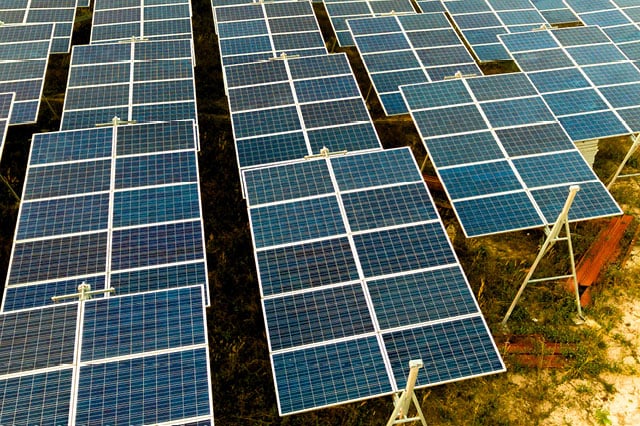Major steps in support of the changing energy landscape 8 min read
On 27 July 2021, the Energy Security Board (ESB) handed its final advice on the post-2025 redesign of the National Electricity Market (NEM) to the Energy National Cabinet Reform Committee and on 26 August 2021 this advice was publicly released. This is a significant step in a two-year work program undertaken by the ESB and Australia's primary energy market bodies – the Australian Energy Market Commission, the Australian Energy Market Operator and the Australian Energy Regulator.
The ESB's Post-2025 Market Design work has been directed at addressing the challenges faced by Australia's transitioning electricity system, and seeks to ensure that the electricity system is fit for purpose and supports the changing energy landscape. The advice covers the very wide range of issues and challenges facing our complex electricity system and its many stakeholders. While there are aspects of the advice that have attracted immediate attention and some controversy (such as the proposed capacity mechanism), any reader of the advice would be hard pressed not to appreciate the level of detail and thought that has clearly gone into this body of work.
We are considering the implications of the ESB's final advice, and opportunities in this space for our clients and the sector more broadly. We will be publishing further Insights in relation to:
- the jurisdictional strategic reserve (JSR) mechanism;
- the proposed capacity mechanism; and
- the congestion management model adapted for integration with renewable energy zones.
Background
The final advice builds on the Options Paper released by the ESB in April 2021 (see our previous Insights on the Options Paper here) and is comprised of a package of reforms across four interrelated pathways and a timeline for their implementation (ie immediate, initial or long-term reforms).
The reform pathways
We analyse the four pathways and some of the key reforms below. Click on each of the buttons for more information.
As renewables continue to penetrate the market at a rapid pace, and ageing thermal generation retires over time, the ESB considers that existing market arrangements are unlikely to drive commercial investment in, or send a signal to the market for, the right mix of resources to support this transition and minimise price and reliability shocks to consumers.
According to the ESB, this is because investors face a combination of uncertainties, including in relation to the nature and timing of government intervention, declining technology costs for renewable and storage resources, unpredictable levels of demand, decarbonisation of energy intensive industries and production processes, and the timeline for the exit of coal-fired power generation from the market. Together, these uncertainties have the effect of delaying or deterring investment decisions.
This reform pathway aims to incentivise the competitive provision of an efficient mix of resources by giving participants the confidence to invest despite this uncertainty.
Immediate reforms
- Implementation of a NEM-wide jurisdictional strategic reserve (JSR) mechanism, to allow jurisdictions to procure reserves above the national market reliability standard where this is considered necessary (eg on the occurrence of unforeseen reliability events). The JSR would become part of AEMO's RERT portfolio and would be activated as needed.
- Mechanisms to improve the transparency around future generator availability, mothballing and seasonal shutdowns to deal with uncertainties in relation to the timing of retirement for coal-fired power generation.
- Adoption of a common set of guiding principles to apply when developing future government investment schemes and achieve alignment between the physical needs of the electricity system and the financial interests of generators.
- Introduction of a national Ministerial lever to trigger the current Retailer Reliability Obligation (RRO) to give jurisdictions the ability to strengthen the RRO and manage reliability gaps until the new capacity mechanism is implemented.
Initial reforms
- Introduction of a capacity mechanism which explicitly values capacity separately from energy production. Given stakeholder concerns around the potential for this technology-agnostic mechanism to keep coal-fired plants running for longer, and the significant change to existing arrangements this mechanism represents, the ESB will work with stakeholders and jurisdictions over the next 12-18 months to progress detailed design, with Ministerial agreement targeted for mid-2023.
As ageing synchronous generators exit the market, so too do the essential system services that these generators provide, which are bundled with the delivery of energy itself. These services are frequency control, operating reserves, inertia and system strength.
The objective of this reform pathway is to ensure that these services:
- are properly valued, to encourage investment and innovation in their supply;
- continue to be provided in the market in light of rising levels of non-synchronous generation; and
- can be procured, scheduled and dispatched efficiently and in a co-ordinated way,
to maintain the security and stability of the power system. This will allow the market to move from relying on interventions by AEMO to provide these essential system services, to procuring the delivery of these services competitively using market-based mechanisms.
Initial reforms
- Development of a Unit Commitment for Security (UCS) tool and System Security Mechanism (SSM), which are short-term procurement mechanisms for AEMO to value, procure and schedule system services. These mechanisms are designed to bridge the gap until the formation of spot markets for these services. Both the UCS and SSM are currently being progressed in AEMC rule changes.
- Potential for new operating reserve service markets to provide explicit, unbundled value for flexible capacity to be available, in order to manage growing forecast uncertainty and fluctuations in net demand. This reform will continue to be progressed by the ESB and market bodies (with the AEMC currently considering two rule change requests that propose two different reserve service options).
Long-term reforms
- Potential development of a spot market for valuing and procuring inertia. Further development and technical consideration will be required to progress this reform. The ESB will continue to monitor market conditions and advise on the need or opportunity for longer term reform, including in relation to the further unbundling of essential system services, an integrated ahead market and the development of an inertia spot market.
The significant uptake of solar PV and the emergence of domestic digital and battery technologies (eg batteries, electric vehicles and smart appliances), provides opportunities to deliver value to consumers in return for the flexibility they offer from the use of these distributed energy resources (DER). In light of this uptake, there is a growing need for a coordinated approach to the integration of DER into the NEM, as well as other reforms to tackle issues in relation to system security associated with minimum system load and consumer protection.
This reform pathway seeks to support the delivery of value to consumers through the integration of DER and the establishment of frameworks to enable consumers to easily manage and be rewarded for their flexible demand and generation. It also aims to set up a fit-for-purpose consumer protection framework to adapt to new business models and product offerings available to consumers.
Immediate reforms
- Introduction of Ministerial levers across jurisdictions to ensure emergency backstop measures are available to support system security in minimum system load conditions, while more permanent measures are developed under the DER Implementation Plan.
- Implementation of a new consumer risk assessment tool which allows market bodies to test whether consumer protections are fit for purpose on an ongoing basis.
Initial reforms
- Initial reforms, which are made through the DER Implementation Plan, are aimed at:
- rewarding consumers where flexible demand and generation can be offered to the wholesale market;
- providing consumers with greater choice in relation to how they engage in the market through retailers and aggregators, while still affording fit-for-purpose protection to consumers; and
- ensuring networks can accommodate the continued uptake of DER, while maintaining system security.
Transmission and access are sticking points for many participants in the NEM and, in part, these issues have prompted the various state-based renewable energy zone (REZ) schemes we have seen emerge over the last couple of years (see our recent Insight on REZs here).
Based on the current open access regime that applies in the NEM, any generator can connect into the grid provided it meets the relevant technical standards and requirements, and may connect irrespective of whether that investment provides value to the broader network. Any impact and costs of congestion that arise due to the connection of additional generation into the grid in a specific area are largely borne by incumbent generators or consumers, rather than by the generator that caused the congestion.
In its final advice the ESB noted that—based on modelling of future transmission, generation and storage—congestion is likely to become increasingly frequent and, over the long term, is expected to have a significant impact on power system efficiency and affordability.
As such, the reforms under this pathway are designed to deliver better market signals to generators and storage providers to establish their projects where there is available capacity (ie REZs), ensure the more efficient use of the network and transmission infrastructure, and reduce uncertainty for investors.
Immediate reforms
- An interim REZ framework comprising principles that relate to planning, connections, funding and economic regulation and access, to maintain consistency across the NEM as various jurisdictions pursue REZ schemes.
Initial reforms
- Development of a congestion management model, which introduces a two-pronged mechanism of congestion charges and congestion rebates. Congestion charges would be payable by all scheduled and semi-scheduled generators based on their impact on congestion, and congestion rebates would be payable to incumbent generators and new generators that locate in accordance with the planning framework, and would be determined based on a specified allocation metric such as availability. The congestion management model is proposed to be implemented (at least in the short term) in place of the previously proposed coordination of generation and transmission infrastructure (COGATI) reforms.
Next steps
-
National Cabinet is now considering the recommendations made by the ESB. A final package of reforms will be determined following a meeting of Energy Ministers in September, after which the final reforms will be provided to National Cabinet for consideration in October.







